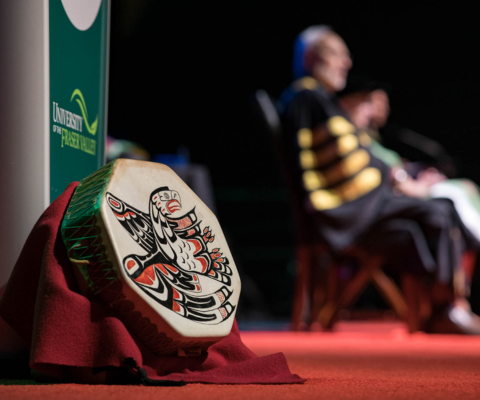Investing in the infrastructure of minds

This op-ed was published in the Calgary Herald on April 7, 2016.
By Elizabeth Cannon, president of the University of Calgary
Canada’s view of infrastructure is changing. The federal budget made it clear that infrastructure means more than waste-water, highways and bridges. As vital as these things are, Canada also needs infrastructure that supports the mind – technology enhanced learning environments, sustainable campuses and the modern research facilities that nurture curiosity and discovery.
The government’s $2 billion investment in postsecondary infrastructure will support students and scientists with modern labs, green technologies and enhanced capacity for commercialization.
In Calgary, as in other areas of Canada, the need for both university and city infrastructure investment is great. We are Canada’s fastest-growing municipality, and in the years ahead we’ll need to meet growing student demand at our universities. Alberta Advanced Education estimates that by 2022-23 there will be major space shortages, including a shortage of 4,607 spaces at the University of Calgary.
In Calgary and across Canada, long-term economic sustainability relies on universities’ ability to produce highly educated, skilled workers. We need to increase learning spaces in order to sustain and diversify economic growth.
Like universities across Canada, the University of Calgary has a number of significant projects that could get underway quickly, putting people back to work and building long-term capacity in research and innovation. This includes expanding a science building and modernizing outdated labs. This project would enable the university to provide 625 additional student spaces and would support an estimated 584 person years of employment during construction.
While infrastructure money will give Canada better spaces for research and innovation to happen, enhanced funding for Canada’s research councils will fuel the ideas behind both.
Additional investments of $95 million per year mark the highest amount of new annual funding for discovery research in more than a decade. Importantly, these investments aren’t targeted to specific areas of research. They let discovery lead.
This is good progress in restoring Canada’s position as a research leader. We have fallen from 3rd to 8th place in research funding amongst OECD nations. In the coming years we will still need significant new investments to return to globally competitive levels, but this week’s support for our research councils is a step in the right direction.
Budget 2016 recognizes that without discovery research, there is no innovation. And innovation is the powerful economic driver that this government has committed to. With a vision “to build Canada as a centre of global innovation,” the government has pledged $800 million to support innovation networks and clusters as part of their upcoming Innovation Agenda,
Addressing a Chamber of Commerce audience the morning after the budget, Finance Minister Bill Morneau said these investments “reflect our core believe that the advancement of basic sciences and the development of intellectual capacity is really at the foundation of innovation.
In the coming months, the government will start to re-imagine how it supports innovation and growth, in partnership and coordination with the private sector, provinces, territories and municipalities, universities and colleges, and the not-for-profit sector. Canada’s universities look forward to playing a key role in this renewal of our innovation system, with an eye on Canada’s needs over the coming decade.
The government is also investing in minds by helping more Canadians get a university education. Better access to higher education for all Canadians is an essential ingredient for a fairer, more prosperous Canadian society. We welcome changes to the Canada Student Loan Program making financial aid clearer and higher education more accessible. More than ever before, high quality postsecondary education is an attainable goal for all Canadian families.
Canada must do more to close the education gap with Indigenous peoples, and the government’s budget helps build a strong foundation for success. By investing in clean drinking water, improved housing, better health care and K-12 education, this budget helps give hope to Indigenous communities. It lays the groundwork for Indigenous children and their families to achieve their potential through higher education.
This government understands that universities connect people and ideas; empower students, families and communities; generate knowledge and help bring good ideas to market. That’s why universities are integral to achieving a vision for our country as an innovation leader.
This budget will contribute to a foundation for excellence. It will help build the conditions for Canada to become an innovation nation.
Fundamentally, Budget 2016 is an investment in the intellectual capacity and potential of Canadians. And there is no better investment a country can make.
About Universities Canada
Universities Canada is the voice of Canada’s universities at home and abroad, advancing higher education, research and innovation for the benefit of all Canadians.
Media contact:
Lisa Wallace
Assistant Director, Communications
Universities Canada
communications@archives.univcan.ca
Tagged: Indigenous education, Research and technology, Skills and talent



